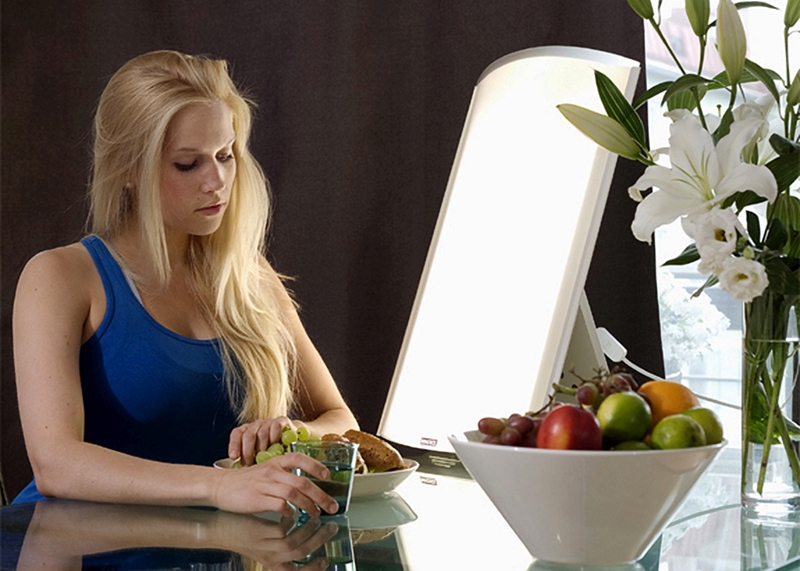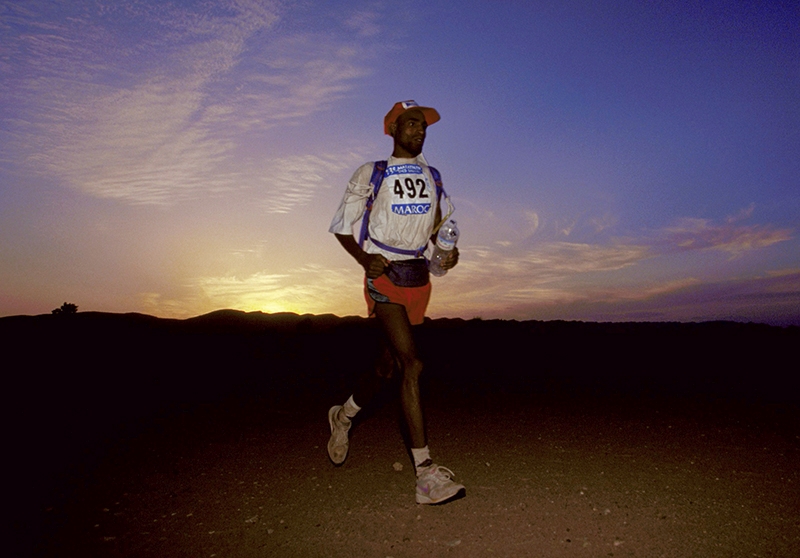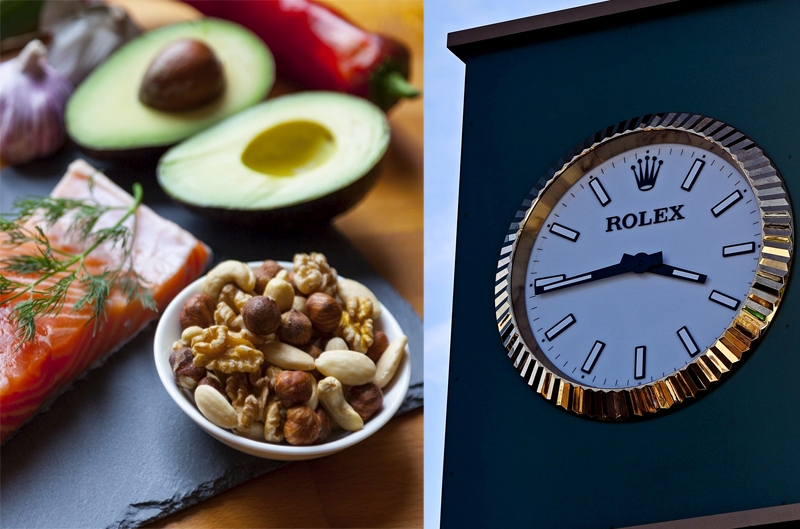You are viewing 1 of your 1 free articles. For unlimited access take a risk-free trial
Reset your body clock for better performance

It’s long been known that biological rhythms can affect physical performance and without doubt, the most influential rhythm of all is the ‘circadian’ rhythm. The circadian rhythm is your body’s daily wake/sleep rhythm, and is regulated by the secretion of a hormone called melatonin, which also affects body temperature, mental alertness and even reaction times. The highest levels of melatonin tend to occur in the middle of the night, resulting in sleepiness and reduced body core temperature and alertness, while the lowest typically occur during the late afternoon/early evening period, which is when many people feel at their best (see figure 1). The prevailing wisdom therefore is that by scheduling your training sessions to coincide with your ‘circadian peak’ (ie late afternoon/early evening), you will not only feel and perform better, your higher core temperature will also reduce any risk of injury.
Figure 1: Some major circadian rhythms driven by your internal clock

The graphs above show the typical daily variations of melatonin, secretion, core temperature, triacylglycerol, alertness and reaction time as a result of the circadian rhythm. As a result of these rhythmic fluctuations, many people experience maximum mental alertness, fastest reaction times and highest core temperature in the late afternoon/early evening period, while the peak in melatonin concentrations in the middle of the night period leads to maximum fatigue/sleepiness and lowest alertness. [Source: . Lancet 358:999-1005, 2001]
Travel and body clock
This is all well and good but the obvious question is what happens when you travel across time zones, or when you have to compete at a time when your body clock says you should be resting? One way around this is to use artificial bright light, which is particularly rich in blue light. This kind of light used early in the morning shifts your body clock forward (useful when travelling east or when competition is scheduled very early in the morning). Using it in the evening shifts your body clock backwards (useful when travelling west or when competition is very late in the evening). But just how effective is this ‘bright light strategy when used prior to competition?One recent study published by Brazilian researchers has attempted to answer this question by investigating the use of an artificial bright light on the entrainment of the sleep/wake cycle, as well as the reaction times of athletes before the Rio 2016 Olympic Games [Chronobiol Int. 2018 Aug;35(8):1095-1103]. A total of 22 athletes from the Brazilian Olympic swimming team were evaluated, with the aim of preparing them to compete at a time (very late evening) when they would normally be about to go to bed for the night. During the 8-day acclimatisation period, their sleep/wake cycles were assessed by actigraphy (which measures sleep quality), with all the athletes being treated with artificial bright-light therapy in the evenings for between 30 and 45 minutes (starting at day 3). In order to assess reaction times (a good measure of wakefulness – a key variable in the circadian rhythm), the ‘psychomotor vigilance test’ was performed before (day 1) and after (day 8) the bright light therapy.
Light results
As a result of the intervention, the swimmers athletes slept significantly later after starting the bright-light therapy (compared with before). When tested in the morning, the athletes’ reaction times showed a significant improvement when comparing the pre and post bright-light therapy treatment. Overall, the researchers concluded that the light therapy treatment was effective at delaying the athletes’ sleep/wake cycles and improving reaction times of members of the swimming team, and was therefore effective at preparing the swimmers who had to perform in competitions that took place late at night.Implications and recommendations
Ideally, this study would have compared the performances of two groups of swimmers who competed late at night – one who had used bright-light therapy, and one that hadn’t (the control group). However, given all the swimmers were on the Olympic team and had to perform at their best, it’s easy to see why this study design wouldn’t have been suitable! Also, measures of melatonin taken from the swimmers would have been revealing. Nevertheless, a comparison of the pre/post bright-light therapy results suggests that this approach did make a significant and positive difference, suggesting appropriately timed bright-light therapy is a useful adjunct when trying to reset your body clock.Practical suggestions
- For competition (where the time of the event is usually fixed), you may wish to experiment with manipulating your circadian rhythm so that you’re nearer your peak at the time of the event. The same applies when competing abroad in different time zones.
- Consider purchasing a (relatively cheap) bright-light device. These can provide a powerful and portable source of 468nm blue light, thereby mimicking the effect that exposure to bright midday summer sunshine has.
- To advance circadian rhythm (ie shift it earlier, needed for example when travelling east), exposure to blue light first thing in the morning is recommended; to delay circadian rhythm (make the peak occur later – useful when travelling west), evening exposure to blue light is recommended.
- Athletes who struggle with dark winter mornings may find the use of early morning blue light useful for maintaining circadian rhythm and improving the quality of morning training sessions.
- During mid-summer months, simply gradually going to bed and getting up earlier (to shift the body clock forwards) or later (to shift it backwards) will provide a sufficient stimulus because there’s plenty of bright sunlight (containing blue wavelengths) around to stimulate changes in melatonin levels.
- Unless you’re trying to manipulate your circadian rhythm, try to maintain regular bedtime and waking hours; irregular hours can disrupt circadian rhythm, leading to a generalised drop in performance.
Newsletter Sign Up
Testimonials
Dr. Alexandra Fandetti-Robin, Back & Body Chiropractic
Elspeth Cowell MSCh DpodM SRCh HCPC reg
William Hunter, Nuffield Health
Newsletter Sign Up
Coaches Testimonials
Dr. Alexandra Fandetti-Robin, Back & Body Chiropractic
Elspeth Cowell MSCh DpodM SRCh HCPC reg
William Hunter, Nuffield Health
Keep up with latest sports science research and apply it to maximize performance
Today you have the chance to join a group of athletes, and sports coaches/trainers who all have something special in common...
They use the latest research to improve performance for themselves and their clients - both athletes and sports teams - with help from global specialists in the fields of sports science, sports medicine and sports psychology.
They do this by reading Sports Performance Bulletin, an easy-to-digest but serious-minded journal dedicated to high performance sports. SPB offers a wealth of information and insight into the latest research, in an easily-accessible and understood format, along with a wealth of practical recommendations.
*includes 3 coaching manuals
Get Inspired
All the latest techniques and approaches
Sports Performance Bulletin helps dedicated endurance athletes improve their performance. Sense-checking the latest sports science research, and sourcing evidence and case studies to support findings, Sports Performance Bulletin turns proven insights into easily digestible practical advice. Supporting athletes, coaches and professionals who wish to ensure their guidance and programmes are kept right up to date and based on credible science.











